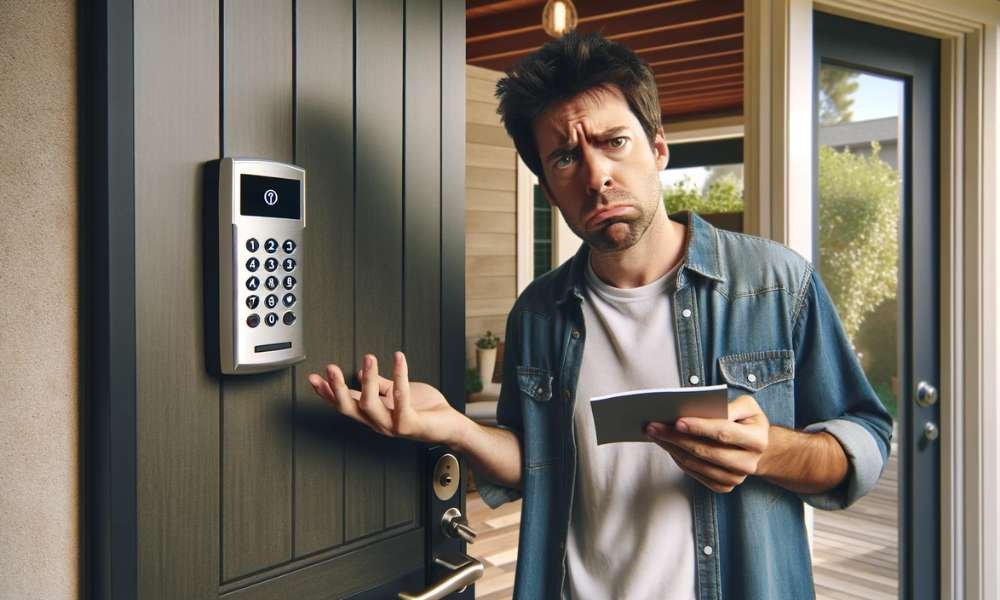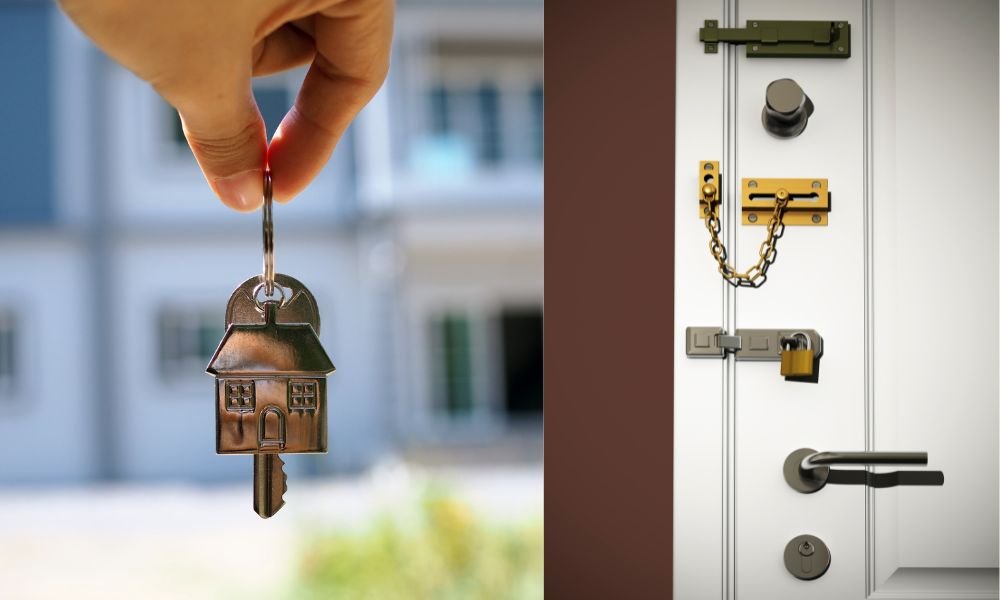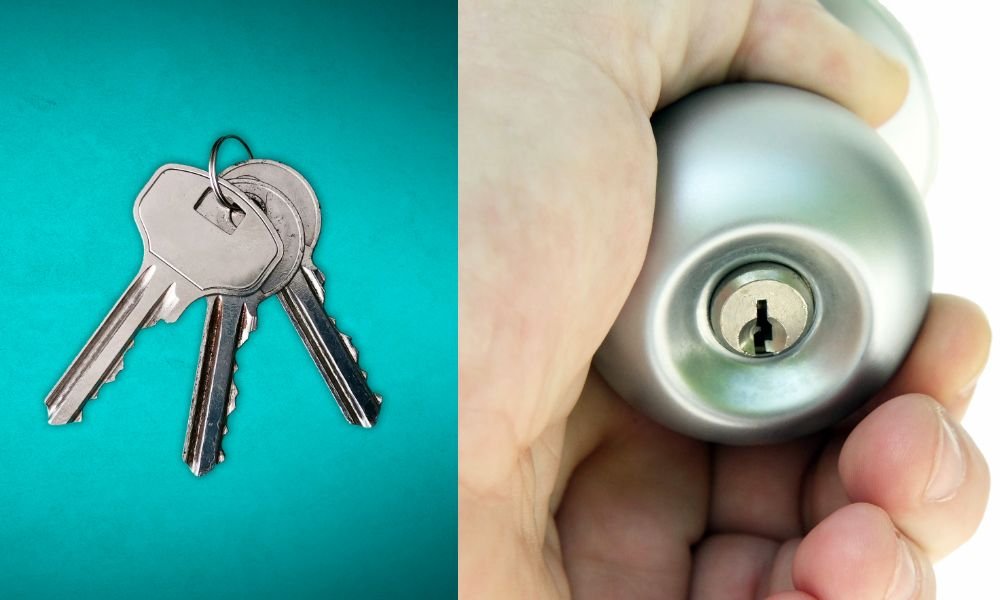In the era of smart homes and advanced security systems, keypad door locks have become a popular choice for homeowners seeking convenience and enhanced security. These devices offer keyless entry, reducing the risk of lost or stolen keys. However, like any technology, keypad door locks can experience issues. If your keypad door lock is not working, several factors could be responsible. In this article, we will explore the common reasons for keypad door lock malfunctions and provide solutions to troubleshoot and fix these problems.
Common Reasons for Keypad Door Lock Malfunctions
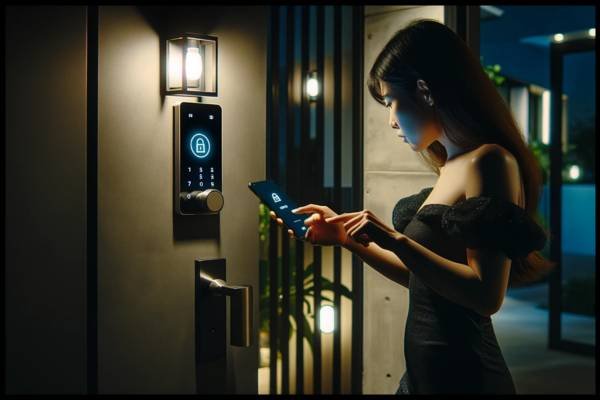
1. Dead or Weak Batteries
One of the most common reasons for stop working is dead or weak batteries. Keypad locks rely on battery power to operate. When the batteries are low, the lock may not respond or may function erratically.
Solution:
- Replace the batteries with new ones. Ensure you use the correct type and follow the manufacturer’s recommendations. New batteries can restore full functionality to the lock, eliminating any response issues caused by insufficient power. Make it a habit to check and change the batteries regularly to avoid sudden lockouts. Regular maintenance can keep functions smoothly and extend its lifespan.
2. Incorrect PIN Code
Entering the wrong PIN code is a simple but frequent issue. If the lock does not recognize the code, it will not unlock.
Solution:
- Double-check the PIN code you are entering. Ensure that you are using the correct combination. It’s easy to mistype or forget the correct sequence, especially if you have recently changed the code. Keeping a record of your current PIN can prevent such issues. If you suspect someone else may know your code, changing it periodically can enhance security.
3. Keypad Malfunction
The keypad itself can malfunction due to dirt, moisture, or physical damage. A damaged keypad may not register the input correctly.
Solution:
- Clean the keypad with a dry, soft cloth. Avoid using harsh chemicals or water. Dirt and grime can interfere with the keys’ sensitivity, causing input errors. Inspect the keypad for any visible damage such as cracks or worn-out buttons. If the keypad is physically compromised, it may need to be repaired or replaced. Regular cleaning can prevent buildup and maintain optimal performance.
4. Lock Mechanism Issues
The internal mechanism can jam or malfunction, preventing the door from unlocking even if the correct code is entered.
Solution:
- Lubricate into the mechanism with a graphite-based lubricant. Avoid using oil-based lubricants as they can attract dust and cause further issues. Graphite lubricants reduce friction without gumming up the mechanism. If lubrication doesn’t resolve the problem, the lock might have a more serious internal issue. In such cases, contact a professional locksmith to inspect and repair the mechanism. Regular lubrication can keep its mechanism smooth and reliable.
5. Software Glitches
Some keypad locks, especially smart locks, may experience software glitches or require firmware updates.
Solution:
- Reset the lock by following the manufacturer’s instructions. This often involves removing the batteries and holding down a reset button. A reset can clear minor software bugs and restore normal operation. Check for firmware updates through the manufacturer’s app or website and install any available updates. Keeping the software up to date ensures that it is operated with the latest enhancements and security patches. Regular updates can prevent glitches and improve overall functionality.
6. Environmental Factors
Extreme temperatures, humidity, and other environmental factors can affect the performance of keypad locks.
Solution:
- Ensure the lock is suitable for the environmental conditions of your location. Some locks are designed to withstand extreme weather conditions better than others. If this is not rated for the conditions it’s exposed to, consider upgrading to a more robust model. If environmental factors are a consistent issue, consider installing a weatherproof cover for the lock. This can provide additional protection and extend the lifespan of the lock. Regular checks and protective measures can mitigate environmental impacts.
7. Low-quality or Incompatible Lock
Sometimes, the problem lies with the lock itself. Low-quality locks or those not compatible with your door can cause frequent malfunctions.
Solution:
- Invest in a high-quality one from a reputable manufacturer. Ensure it is compatible with your door type and meets your security needs. Researching and selecting a reliable brand can save you from frequent issues and potential security risks. Read reviews and seek recommendations before purchasing a new one. This can help you make an informed decision and choose a lock that offers both durability and security. Investing in quality from the start can prevent many common problems.
Troubleshooting Steps

To diagnose and fix the issue follow these troubleshooting steps:
- Check the Batteries: Replace the batteries with new ones and ensure they are correctly installed. Verify the battery type and positioning to prevent power issues.
- Verify the PIN Code: Make sure you are entering the correct PIN code. If you have forgotten the code, refer to the lock’s manual for instructions on resetting it. Keeping the manual handy can save time and frustration.
- Inspect the Keypad: Clean the keypad and check for any physical damage. Replace it if necessary. Regular maintenance can prevent build-up and ensure optimal performance.
- Lubricate the Lock Mechanism: Use a graphite-based lubricant to ensure that mechanism is not jammed. Avoid oil-based lubricants as they can attract dust.
- Reset the Lock: Perform a reset according to the manufacturer’s instructions to resolve any software glitches. This can clear minor bugs and restore normal operation.
- Check for Updates: Look for firmware updates and install them if available. Keeping the software current ensures the lock operates with the latest enhancements.
- Assess Environmental Factors: Ensure this is suitable for your local weather conditions and consider using a weatherproof cover. Protective measures can mitigate environmental impacts.
- Evaluate Lock Quality: If you suspect the lock is of low quality or incompatible, consider replacing it with a better one. Investing in quality can prevent frequent issues.
Preventive Measures
To avoid future issues with your keypad door lock, consider these preventive measures:
- Regular Maintenance: Periodically check and replace the batteries, clean the keypad, and lubricate the mechanism. Regular upkeep can prevent unexpected malfunctions.
- Keep the Manual Handy: Always keep the lock’s manual in a convenient place. It contains valuable troubleshooting information and reset instructions. This can save time in case of issues.
- Stay Updated: Regularly check for firmware updates and install them promptly. Updates can enhance functionality and security.
- Environmental Protection: If you live in an area with extreme weather, invest in a weatherproof cover for your lock. This can provide additional protection.
- Quality Matters: Invest in a high-quality lock from a reputable manufacturer. This can save you time and money in the long run by reducing the likelihood of issues.
When to Call a Professional
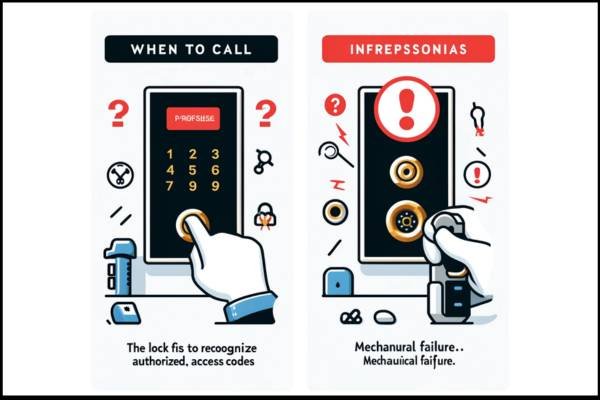
If you have tried all the troubleshooting steps and this is still not working, it may be time to call a professional locksmith. A locksmith can diagnose and fix more complex issues that may not be apparent to the average homeowner. Here are some situations where you should seek professional help:
- Persistent Malfunction: If the lock continues to malfunction despite your efforts, a professional can identify underlying issues.
- Physical Damage: If the keypad or anything is physically damaged, a locksmith can repair or replace it to restore security.
- Complex Repairs: If the issue requires disassembling the lock or dealing with complex mechanisms, professional expertise is essential.
- Security Concerns: If you suspect this has been tampered with or compromised, a professional can assess and enhance your security.
Conclusion
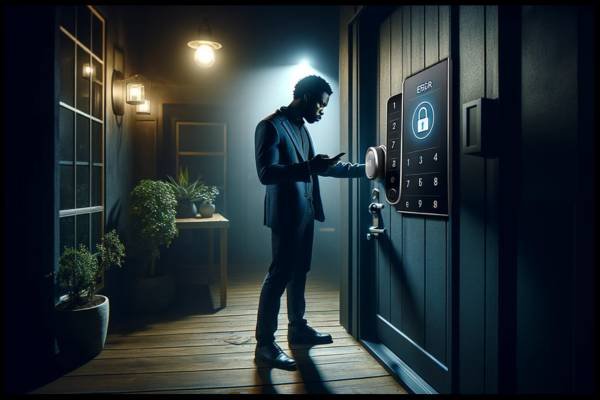
Keypad door locks offer convenience and enhanced security, but like any device, they can experience issues. By understanding the common reasons for malfunctions and following the troubleshooting steps outlined in this article, you can resolve most problems on your own. Regular maintenance and preventive measures can help ensure your keypad door lock remains reliable and functional. If all else fails, do not hesitate to seek the assistance of a professional locksmith to secure your home effectively.

